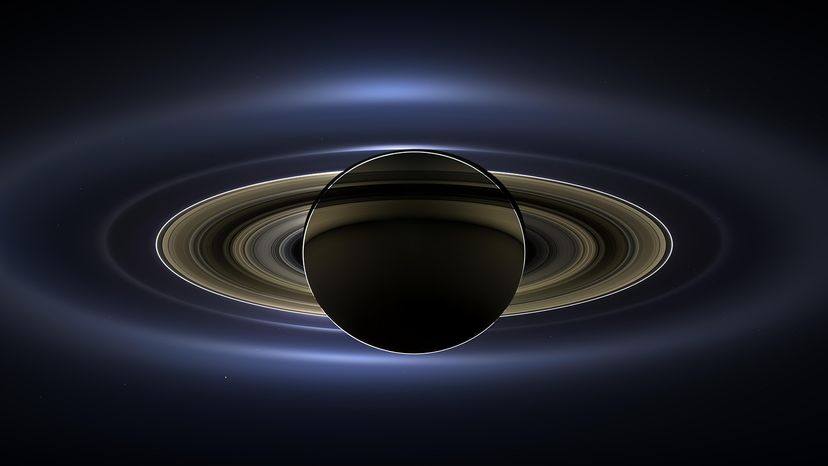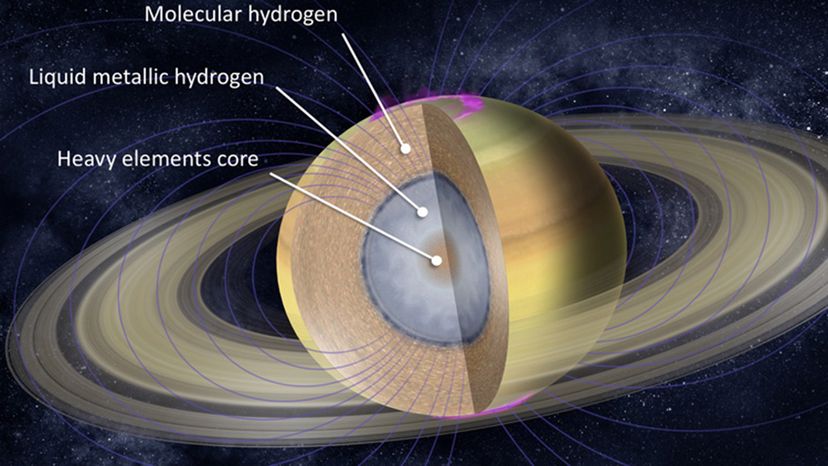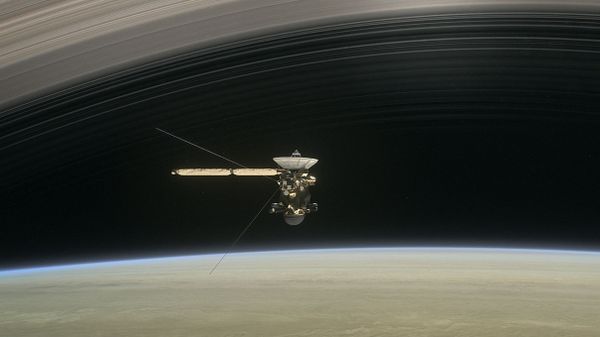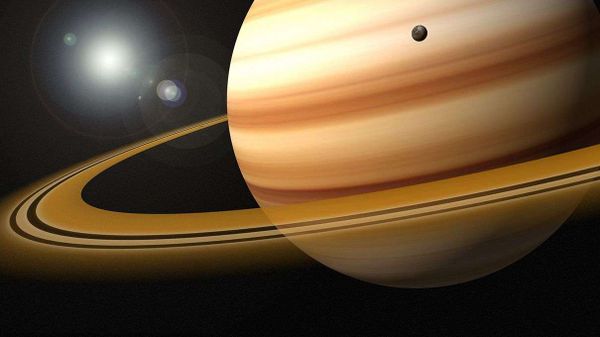Before its fiery death, however, Cassini took unprecedented measurements of the mysterious ring gap region to reveal some surprising ring dynamics. Though mission scientists expected to detect some wispy elemental gases in this "empty" region, Cassini's particle instrumentation found a smorgasbord of elements and molecules "raining" from the rings down to the planet's atmosphere. They estimate that around 10 tons (9,072 kilograms) of material is falling onto Saturn from the rings per second, as Meghan Bartels for Space.com writes.
That means that Saturn's rings will eventually disappear, as a study from late 2018 concluded.
"[T]he rings have less than 100 million years to live. This is relatively short, compared to Saturn's age of over 4 billion years," James O'Donoghue, of NASA's Goddard Space Flight Center, said in a December statement.
Now, researchers have used Cassini's ring dives to estimate when Saturn acquired its famous rings.
When Cassini zipped through Saturn's ring plane, mission managers allowed the planet, its rings and moons to gravitationally tug at the speeding spacecraft. The extremely slight tugs resulted in tiny changes in the probe's trajectory, which could be precisely measured. Those changes allowed scientists to, for the first time, make a very good measurement of how much mass is holed up in Saturn's rings.
After analyzing the final set of orbits in September 2017, however, the extent to which Cassini's trajectory was deflected initially didn't make sense. It didn't match the predictions by theoretical models. It turned out that Cassini's motion was being additionally altered by massive flows of material inside Saturn's thick atmosphere at the equator about 6,000 miles (9,656 kilometers) deep. These massive flows are moving about 4 percent slower than the upper atmospheric clouds that are visible, causing a gravitational anomaly that wasn't predicted.
"The discovery of deeply rotating layers is a surprising revelation about the internal structure of the planet," said Cassini project scientist Linda Spilker of NASA's Jet Propulsion Laboratory in a statement. "The question is what causes the more rapidly rotating part of the atmosphere to go so deep and what does that tell us about Saturn's interior."



